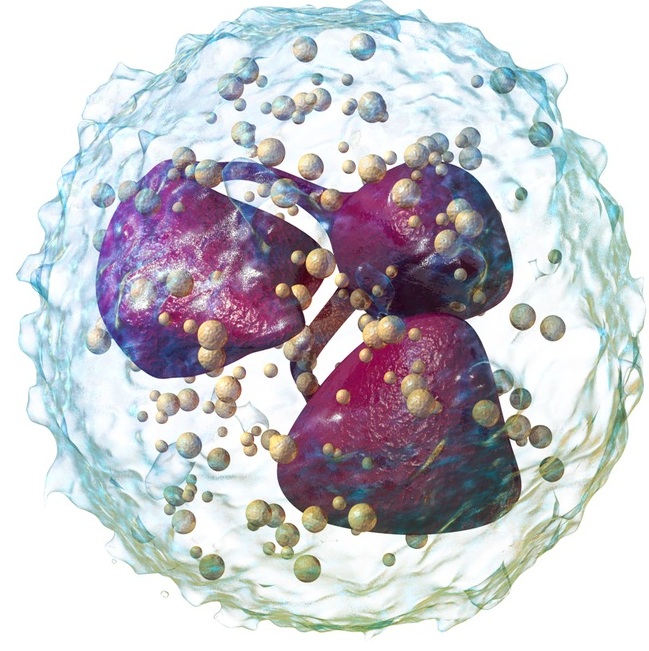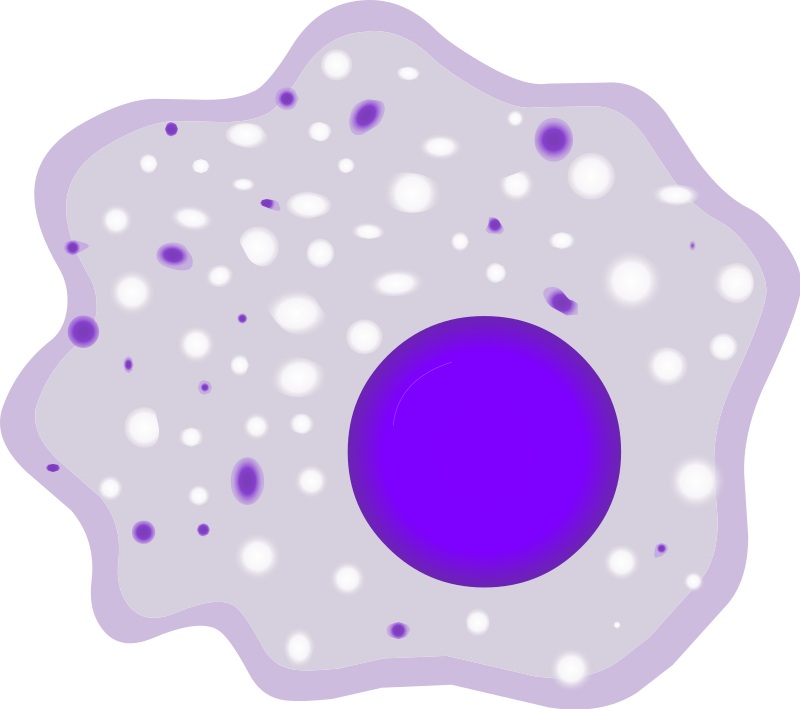Difference Between Neutrophils and Macrophages
Table of Contents
The key difference between neutrophils and macrophages is that neutrophils are not antigen presenting cells while macrophages are antigen presenting cells.
Neutrophils and macrophages are leucocytes which belong to the innate immune system, and they act as the main initial defenders against pathogens. These specialized cells can squeeze through the small holes of blood vessels during a process called diapedesis, which ultimately enables them to travel to the areas of infection easily. Normally, an inflammatory reaction takes place during tissue damage. This is due to the chemical substances released by bacteria into the surrounding tissue and blood. These chemicals eventually trigger the attraction of neutrophils and macrophages towards these chemical substances through chemotaxis. Hence, this is the first significant reaction of defense action against pathogens. Moreover, both types of cells can phagocytize pathogens in the infected area.
CONTENTS
1. Overview and Key Difference
2. What are Neutrophils
3. What are Macrophages
4. Similarities Between Neutrophils and Macrophages
5. Side by Side Comparison – Neutrophils vs Macrophages in Tabular Form
6. Summary
What are Neutrophils?
Neutrophils are the most abundant type of white blood cells in the blood. Neutrophils are also the most abundant type of granulocytes. They act as the first line of defense when there is an inflammatory reaction or an infection.

Figure 01: Neutrophil
Furthermore, they are terminally differentiated cells that contain a plethora of proteolytic enzymes and reactive oxygen species that cause local tissue damages when released into the extracellular matrix. It takes about 14 days to develop a neutrophil in bone marrow. After that, they start circulating in the bloodstream for 6 to 14 hours. Nearly 50% of the circulating neutrophils adhere to the vascular endothelium. These neutrophils can survive for another 48 hours, unlike the rest of the neutrophil cells that are not attached to vascular endothelium.
What are Macrophages?
Macrophages are amoeba-like large, specialized cells that recognize, engulf and destroy foreign invaders. They are popular as big eaters. Furthermore, they clean our body by engulfing microscopic debris. They are the oldest mediators of the innate system. Moreover, they originate from monocytes in the bone marrow. Monocytes differentiate into macrophages when they are released and migrate into various tissues. Since they develop within the tissues, we call them tissue macrophages. Tissue macrophages can live for months to years until they are needed and destroyed upon performing their defensive function. Tissue macrophages are very important since they act as the main effectors in the defense system against intracellular pathogens.

Figure 2: Macrophage
Macrophages use a process called phagocytosis to destroy and get rid of unwanted things out of the body. Phagocytosis starts with forming a pocket-like structure called phagosome due to the engulfing particles. Then, using the enzymes released by lysozymes, they digest the particles within the phagosomes.
What are the Similarities Between Neutrophils and Macrophages?
- Both neutrophils and macrophages are white blood cells.
- Also, both are phagocytes.
- And, both of them work against infections.
- Besides, they originate at the bone marrow.
What is the Difference Between Neutrophils and Macrophages?
The key difference between neutrophils and macrophages is the ability to present antigens. Unlike neutrophils, macrophages can present antigenic fragments to the T lymphocytes in the context of MHC (Major Histocompatibility Complex) class II molecules after engulfing the bacterial cells. Besides, macrophages can live longer than neutrophils. Thus, this is another difference between neutrophils and macrophages.
Also, one more difference between neutrophils and macrophages is their size; macrophages are larger than the neutrophils. Since macrophages are larger than neutrophils, they can phagocyte greater number of invader pathogens than neutrophils. After infection, neutrophils dominate the infected site early while macrophages dominate infected sites at later stages (1 to 2 days after infection). Therefore, this is also a difference between neutrophils and macrophages.
Furthermore, another difference between neutrophils and macrophages is that neutrophils have a multi-lobed nucleus while the nucleus of macrophage is big and round shaped. The below infographic on the difference between neutrophils and macrophages provides more details on the comparative differences.

Summary – Neutrophils vs Macrophages
Blood contains different types of blood cells. White blood cells are a major type among them. There are different types of white blood cells (leukocytes) such as monocytes, lymphocytes, neutrophils, eosinophils, basophils, and macrophages. Neutrophils and macrophages are two common types of white blood cells that work against an infection. While neutrophils are the most abundant white blood cells, macrophages are the large specialized cells that are known as big eaters. Neutrophils do not have the capability to present antigens while macrophages are professional antigen presenting cells. Furthermore, when there is an infection, neutrophils come first while macrophages come later. This summarizes the difference between neutrophils and macrophages.
Reference:
1. “Neutrophil.” NeuroImage, Academic Press, Available here.
2. “Macrophages: Definition, Function & Type”, Study.com, Available here.
Image Courtesy:
1. “Blausen 0676 Neutrophil (crop)” By Blausen.com staff (2014). “Medical gallery of Blausen Medical 2014”. WikiJournal of Medicine 1 (2). DOI:10.15347/wjm/2014.010. ISSN 2002-4436 (CC BY-SA 4.0) via Commons Wikimedia
2. “Macrophage” By A. Rad, Mikael Häggström, Spacebirdy, RexxS, domdomegg – File:Hematopoiesis (human) diagram en.svg (CC BY-SA 4.0) via Commons Wikimedia
ncG1vNJzZmivp6x7pbXFn5yrnZ6YsqOx07CcnqZemLyue8OinZ%2Bdopq7pLGMm5ytr5Wau266xK6rq6egnbatv4yapZ1lpqh6rq3Cq6apoJGcsrR7